Lesson by IM Angel Martín   Angel Martín is an International Master from Spain. He's a former four-time Spanish Champion and Assistant Manager of the Spanish chess magazine Peón de Rey. Proof-reading and translations to English was prepared by International Master, Michael Rahal. Angel Martín is an International Master from Spain. He's a former four-time Spanish Champion and Assistant Manager of the Spanish chess magazine Peón de Rey. Proof-reading and translations to English was prepared by International Master, Michael Rahal.  Pawn weaknesses: the isolated pawn Pawn weaknesses: the isolated pawn
The theme of the isolated pawn has been studied in previous lessons, although on that occasion we examined the case of the centre isolated pawn (the typical d4 isolated pawn). The positive factors of this pawn (centre supporting squares, rupture possibilities, more space in the centre), above all in the middle games, exceed the negative factors. However, on this occasion we shall look at the case of an isolated pawn, situated outside the centre squares, and placed on a semi-open file, which has to be constantly defended. Black will have a very passive position and in the end he will lose the pawn, see the model game.
Ivanchuk, V - Illescas, M
Barcelona, 2005
English Opening [A35]
1.Nf3 Nf6 2.c4 c5 3.Nc3 Nc6 4.g3 d5 5.d4 [The alternative is 5.cxd5 Nxd5 6.Bg2 where Black normally continues with 6...Nc7 followed by ...e5.] 5...cxd4 [The most logical move, although there are some other options for Black. For example, he can try to play positions of the Queen's Gambit Tarrasch Defense with 5...e6 6.cxd5 exd5 (6...Nxd5 is also possible) 7.Bg2 Be7. Or he can try 5...dxc4 6.d5 Na5 7.e4 where White sacrifices a pawn for good compensation.] 6.Nxd4 dxc4 7.Nxc6 Qxd1+ 8.Nxd1 bxc6 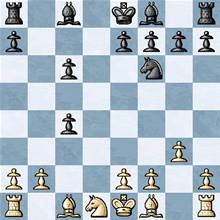
[Black has won a pawn, although he can't really keep it for long. But after he loses one of the pawns on the "c" file the other pawn will be isolated on a semiopen file, and therefore it will be subject to attack. White's advantage, based on his superior pawn structure, can be countered by active play, although in practice it's not easy for Black.] 9.Bg2 Nd5 10.Ne3 Ba6 [Black decides to keep his c4 pawn, which puts some pressure on White's queenside. The alternative is to conserve the c6 pawn with 10...e6!? 11.Nxc4 Ba6 and if 12.b3 Bb4+ 13.Bd2 Bxd2+ 14.Nxd2 Black still has to solve some problems and the game Gulko - Jelen, which we offer in the illustrative games, is a good example.] 11.Nxd5 cxd5 12.Bxd5 Rc8 13.Bd2 e6 14.Be4!? Bc5 15.Bc3 0–0?! 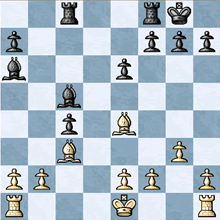
An imprecision. Without the queens on the board, the king may be better in the centre, in view of the simplifications that will allow it to play a more active role. Therefore more precise was 15...f6!? 16.e3 Ke7 17.0–0–0 Bb5 18.h4 h5 19.Rd2 as in the game Hjartarson,J-Arnason,J. Nordic zt 1992 in which Black didn't have any trouble equalizing the game. 
| 
|
| 
| 16.e3 Rfd8 17.Rd1 Bb5 18.Ke2!? [We have already mentioned that the king was OK in the centre, and that is why Ivanchuk refrains from castling.] 18...Ba4 19.Rxd8+ Rxd8 20.Rc1 f5 21.Bf3 Kf7 22.Ke1 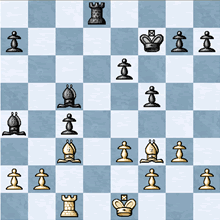
[White's plan is clear: play Be2 y and pressure the c4 pawn. Although Black can defend it with two pieces, a third attacker with b2-b3 will be incorporated, taking advantage of a pin.] 22...Bb5 23.Be2 a6? [A mistake. Black protects his bishop to take the sting out of b2-b3 but now he simply won't have time to defend the pawn. Necessary was 23...Rc8 24.Bd2 (if 24.Be5 Bb4+) 24...Be7 25.a4 (25.b3 is answered by 25...cxb3! 26.Rxc8 b2 and White must give back the rook with 27.Rc1 bxc1Q+ 28.Bxc1=) 25...Ba6 (25...Bxa4 26.Ra1 y Rxa7) 26.b3 Ba3 27.Rb1 Be7 28.bxc4 e5 although White still keeps the advantage.] 24.Bd2 Bd6 25.Bxc4 Be5 26.b3 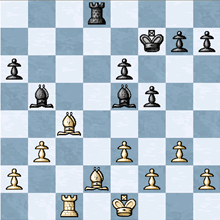
[White is now a pawn up and Ivanchuk doesn't miss his chance to win with precise play.] 26...Ra8 27.a4 Bxc4 [Neither better is 27...Bd7 28.Ke2 and the black pawn on a6 or a5 is under attack.] 28.Rxc4 Rb8 29.Rb4 [More natural is 29.b4 which was also a good move. However, it is easier to win this position without rooks.] 29...g5 [Black can't avoid the exchange, as 29...Rc8 30.Rb6 would force 30...Ra8 with a very passive position.] 30.Rxb8 Bxb8 31.Ke2 Ke8 32.e4! g4 [This move leaves the f4 square unprotected and White will soon take advantage of this factor, but 32...h6 didn't give White much hope anyway.] 33.exf5 exf5 34.Bf4 Ba7 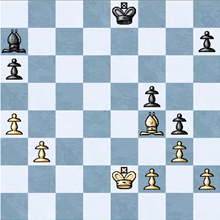
[Obviously the pawn ending after 34...Bxf4 35.gxf4 is simple. White just places his king on d4 and takes advantage of his queenside pawn majority to deflect the black king.] 35.Be3 Bb8 36.Kd3 Kd7 37.Kc4 Ke6 [Also after 37...Kc6 38.b4 White's win is routine.] 38.b4 h5 39.b5 axb5+ 40.Kxb5 [If the passed pawn is further away, then the black king has more difficulties stopping it. That is why White captures with his king.] 40...Kd5 41.a5 Ke4 42.a6 h4 [If 42...Kf3 the most simple is 43.Kb6! although 43.a7 Bxa7 44.Bxa7 also wins.] 43.gxh4 1–0 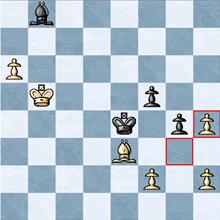
Primera Nota a los pies de mis lector@s: No hay excusa con la lengua inglesa, ya es un instrumento de trabajo como el boli y el teclado. Segunda nota: Cuando me considere preparado para ello les ofreceré mis propios comentarios a partidas interesantes por a o por b (o por c). Tercera nota: esta partida está tomada del email informativo del Internet Chess Club (ICC ) que les recomiendo vivamente |
0 comentarios